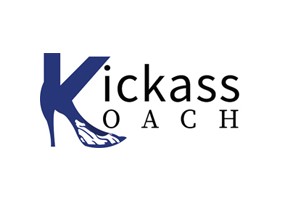Listen to Other Episodes of the Kickass Koach –
ImpactBank’s – the Kickass Koach is on i-Tunes AND you can always find the most recent episodes on ImpactBank’s main website page with a link to iTunes to make it easier for you to subscribe. Of course the podcast link on the website navigation bar also takes you to all episodes.
ImpactBank’s The Kickass Koach podcast supports senior leaders who want to quickly master the art and practice of leadership while stepping into a new assignment. When you were promoted into a senior position, if you’re like most people, you were immediately excited b y the opportunity to really make a difference. You also soon realized the immense, even daunting, challenge ahead of you.
y the opportunity to really make a difference. You also soon realized the immense, even daunting, challenge ahead of you.
You quickly had feelings of being lost, overwhelmed and very alone. It is completely understandable – you need to find your leadership rhythm. We help you find your leadership presence – one that will both command a room and warm hearts so people want to follow you and exceed your expectations – then you will know what it feels like to really make an impact.
ImpactBank’s “ON YOUR MARK…” 3-6 month program focuses exclusively on the first 90-180 days in a new assignment to give you a positive, productive and purposeful start. ImpactBank’s “THE IMPACT BUMP” 18 month program is for leaders who want to take the ‘kick-start’ they got to a whole new level. We exclusively work with senior leaders in their first two years in role so we bring resources designed specifically to support your thinking and development.
This Week’s Additional Recommendations:
Episode 38: The opening episode for this series where I discuss why this information is so important for the senior leader. Episode 39 explores Confirmation Bias. Episode 40 digs into Anchoring Bias. Episode 41 examines the illusion of control. Episode 42 examines the straw-man.
Episode: 26: From the Kickass Koach archives- Over the holidays in December 2015, I reflected on the origins of my value of service. In this episode, inspired in part by Canada’s response to the Syrian Refugee Crises. I am the granddaughter (on both sides) of refugees who came to Canada from Eastern Europe during the 20’s.
Active Series- BIAS
By now you see I change up my definition for BIAS. It’s my way of not getting too comfortable or stuck in the definition – one of my tricks to keep noticing when they inflict themselves on me. It seems to work for me WHEN I remember to do it – that’s the problem with that lazy brain that likes to stay in a rut.
I invite you to look for tricks to catch your biases when they strike.
If you have a reflective system – meditation, yoga, daily walks, journaling, or such – make it a part of your practice.
Definition of BIAS – this week’s iteration
Biases are unconscious deeply held drivers that influence how we see the world.
THEY ARE the air we breathe as we walk through our life – Influencing our every thought and action without our awareness.
THEY ARE slippery clingy messages that make us feel smart and feel good about our intuition so we can make quick, efficient judgments and decisions with our lazy brains.
AND AS A RESULT, biases impact every decision and relationship whether we like it or not.
In the comment section share a variation of the definition that you think may offer a fun twist.
WHY SHOULD YOU CARE?
Do you want to make a difference? If leadership is your CALLING – you feel COMPELLED to have an impact. You ARE a difference-maker.
Most of my clients are in the non-profit sector so having an impact is what gives you purpose. Your currency is purpose and passion – hence you give your heart and soul to your work.
At ImpactBank, we want to co-create a leadership approach so you can BE the difference-maker – have an impact.
I have spent the vast majority of my career in service to or as a senior leader AND impacting the growth and development of others has always been my passion. I made a conscious decision to return to a “source of joy” that I felt when supporting senior leaders AND I decided to focus my attention in the non-profit sector – healthcare, education, human services and so on because leaders who practice their craft in this sector live for purpose first and it inspires me.
As a senior leader in the non-profit sector your currency is purpose and passion AND you have a mandate to make a difference.
You made a choice to serve in the non-profit sector and with that comes a responsibility. You would never intentionally allow your office/workplace to get mired in destructive politics or the ugly hubris of ego, or the toxic energies of a selfish leader to the extent it was negatively impacting the community you serve.
negatively impacting the community you serve.
As the senior leader you are charged with specific deliverables and hopefully a clear mandate. Your biases and those held by members of your team will likely derail your efforts if you are not vigilant. It’s not easy and it is essential you show yourself and your team some compassion when BIASES raise their ugly head AND you will make a major and positive impact when you start to develop strategies to take away the power the biases have. It is a clear path once you see it – never an easy one.
This Week’s BIAS
Loss Aversion: refers to our tendency to strongly prefer avoiding losses to acquiring gains. Most studies suggest that losses are twice as powerful, psychologically, as gains. Because we apparently feel more strongly about a loss, we may miss out on an opportunity to significantly gain. It’s incredibly important for a senior leader to be aware of this tendency.
The Kickass Koach 6-part podcast series discussed the brain’s tendency to focus primarily on the negative and to react strongly in hopes of avoiding it – check out episodes 20-25.
By the way, it is important to point out that while we often talk about this bias as it relates to money, losses come in many different forms. The loss of respect, status and reputation can be just as powerful.
For Your Consideration:
- As I have reflected on this bias, it became really clear to me how I have limited my consideration of the impact of loss aversion to financial matters. NO MORE! While I see many examples of how loss aversion has impacted my financial decisions, it is not always about losing money. As you may have noticed, as the story I told in the podcast unfolded here in the blog post, I came to understand the entire story a bit differently. While losing money was the obvious reason I played it safe, it really was about a lot more. What are the losses you avoid, beyond money? (Pride, Reputation, Good Will, Being Liked, Being Comfortable…..?)
 What if you were bolder? More willing to say the risky, difficult things that could change everything and make things better?
What if you were bolder? More willing to say the risky, difficult things that could change everything and make things better?- What do you need to do to become more aware of when your aversion to loss keeps you from taking action that will fundamentally shift your agency or improve the working conditions of your team? AND THEN, where do you start?
- What are you so afraid of?
- I am not suggesting big radical steps – well not ONLY big radical steps. What are the little things you could do to change the culture of your agency so that members of your team spent less time in self-protection to ward off potential losses in reputation, career opportunities, popularity?
- I encourage you to look at the impact it has on the relationships in your workplace. What if you made it safer?
“Our current problems will not be solved at the level of thinking with which they were created.” A. Einstein
This Week’s Story
In the podcast I tell a story about how I kept my Board (and shareholders) happy by continuing to keep profits and their pay-outs strong even when a part of me had to know a reinvestment of those funds may have been a better approach.
When I look at it with hindsight (so this relates to the “extra” bias I describe below) I realize I wasn’t willing to take the risks before it became obvious the lack of action was hurting the school.
I also realize as I look back that I am driven by an aversion to loss of reputation or respect more than money. So what happened….
From the time I was hired as CEO, the business started turning a profit. I took pride in managing the P+L tightly, monitoring expenses and growth with equal attention to detail. I was also very focused on how to maintain our reputation in the marketplace by investing in staying ahead of or competitors, positioning us to be the number one choice to prospective clients. I was encouraged and appreciated by the Board of Directors and entire shareholder group and my bonuses reflected it.
I prided myself in “seeing around corners” and I shared my future expectations with the Chair of the Board and we even took some interesting steps to mitigate the impact. BUT, while my instincts were encouraging me to be more innovative and stretch some of the conservative boundaries of the industry I served, I didn’t want to rock the boat by calling for investment in a whole new approach while things were so good. Each year our margins improved and our reputation for excellence out paced our actual improvements (although we were doing some really interesting and unprecedented things).
In 2012 I tendered my resignation. Even as I indicated I needed a change I carefully outlined the need for a new approach to ward off what appeared to be a saturation in the unique market we served. I had creative ideas but I wouldn’t be there to lead the implementation so I kept them to myself. I offered to help them find my replacement AND I continued to hold the ship steady BUT I had stopped pushing for improvements and responding as I may have typically.
In this case, my aversion to loss (loss of money by investing in something I couldn’t see through to full implementation and loss of reputation/good-will) got in the way AND I played it safe. Only after the board asked me to again extend my notice did I fully recognize the cost of the delay AND I got the team excited about a BIG IDEA – one I had been dreaming about for a year. It would require financial commitment and investment and my gut said, still does, that it would have paid off and it would have changed things in the industry….but it was too late. With me leaving, the Board gave lip service to my request for investment – yes they put some money into it but it was too little too late.
This Week’s EXTRA BIAS
Hindsight Bias – also known as the knew-it-all-along effect, is the belief that something could have been predicted and our inclination to look back and believe we should have seen it, despite there having been little or no objective basis for predicting it.
I was working in a securities firm in the 1980’s – I wasn’t a trader but I had learned the basics as part of my role in on-boarding new recruits. I recall on Friday October 16th hearing rumours about the market, which in 1987 was doing VERY well (up 40 points as I recall). At the time I had my investments (small amounts at the time since I had just started and I was in Mutual Funds then) balanced in Growth and Bond Funds. I was so excited about what I was hearing I called up the main office and asked that everything be moved into Growth (because I had an employee account they could do this for me over the phone). How dumb was that! On Monday the 19th of October the market experienced a “correction”! I lost a lot of money – well at the time and for me (a 20-something, new to the market kind of investor). Of course I knew enough not to panic and I held on to what I had and within a year I made back all that I lost BUT still I was angry with myself. Even in years since I have asked myself why I assumed it would be a gain. How did I miss it!
Many times I looked back at this and wondered why I didn’t SEE IT! Everything was up so why would I assume it would go up further.
I do this in my practice as well. When I started ImpactBank I decided I would make an impact working with entrepreneurs and then women entrepreneurs. I had been acknowledged throughout my career for my entrepreneurial-like thinking so I thought this would be a fun group to help. When I started getting referrals to work with Senior Leaders (Director and C-Suite) my love for my work soared. I really love these leaders – I understand them and the pain and fear and drive and passion they feel for what they do every day.
NOW, I hear myself lament the fact that I didn’t see it earlier. It is SO obvious – this is my calling and my passion and where my experience and research and ability to make a difference all comes together. WHY did I not see that immediately. Hindsight bias can tear us up – we beat ourselves up rather than realizing the journey we took during the discovery was healthy and meaningful.
What Can You Do?
A few ideas on what you as a leader can do to mitigate the potential impact of the Loss Aversion AND the Hindsight Bias.
- Awareness is the key. Let’s face it every break-through and all leadership starts with AWARENESS. If you don’t have a system or a discipline to nurture or even harness your self-awareness, you will NEVER be an effective leader. You will be pulled by your ego (hubris) or your fears and your biases will take the reins and run you off the road. DEVELOP A SYSTEM OR FIND A THINKING PARTNER TO HELP YOU DEVELOP AND POLISH YOUR SELF-AWARENESS.
- Develop an approach in your workplace whether it be a “let it all hang out” meeting once per month where everyone is e
 encouraged to share what they have been holding back or ideas they think would make the workplace better.
encouraged to share what they have been holding back or ideas they think would make the workplace better. - Ensure you develop skills in your organization so people engage (especially if you are gong to try point #2) with emotional intelligence and self regulation so conversations can be meaningful and respectful.
- Don’t forget the reason you have an aversion to loss. Our brains are both lazy and self-protective. When you or members of your team lose status, control, autonomy, relationship or fairness (see podcast series – episodes 20-25 where we discuss each) the brain feels triggered and the reaction is bold and swift and usually with no self-regulation in sight. As a leader it is your responsibility to limit the possibility or at the very least, the frequency of these very toxic and destructive interactions.
- A quick note specifically on Hindsight Bias. Rather than fixating on the detour and how clear the path you could have followed while looking in the rearview mirror – look back there and find all the rich learning you would have missed had you not taken the path you did. The clear path may be obvious in hindsight but it is the learning and growth that is only available on the many detours that keep us fresh and in learning mindset.
We both know that as a leader you feel pressure to make quick decisions that please everyone and ensure adherence to all regulatory and legislative requirements. ONLY when you recognize the impact bias is having on your ability to deliver on what is expected of you, will you be able to mitigate the potential damage by establishing checks and balances. Taking a bit more time may annoy people – even create some problems for you in the short term AND consulting and reflecting just a bit more before decisions will actually get you where you want to go more quickly.
more time may annoy people – even create some problems for you in the short term AND consulting and reflecting just a bit more before decisions will actually get you where you want to go more quickly.
When you choose a leadership perspective EVERYTHING will change.
Don’t let bias cloud your judgment.
ImpactBank Diversity Program: The Diversity Dividend
Would you or your organization benefit?
We tailor the program to the organization’s and leader’s specific needs and current challenges.
Are there conflicts that persist between stakeholder groups or within specific work groups?
Do you routinely experience poor compliance rates? (In other words, are there requirements that workers just fail to meet on a regular basis? Do you have poor attendance or high attrition rates? Are there constantly mistakes made in working with stakeholders? Are acceptable levels of service only met by some members of the team or not consistently across the team?)
Do you find yourself frustrated because you have to say the same things over and over and you can’t get people to take critical requirements seriously?
Are there conflicts bubbling beneath the surface? Are you and your team tripping over biases and failing to achieve the required outcomes?
Contact us (info@impactbank.ca) for a complementary conversation to discuss how the ImpactBank programs may support your organization’s needs.
NEXT TIME: We being a short series on meetings – what if you could reduce the pain people feel in meetings? …Don’t miss it.


Reading your blog gave me a lot of interesting info , it deserves to go viral,
you need some initial traffic only. How to get initial traffic???
Search for: masitsu’s tricks
Thanks Archie, I appreciate your supportive comment.
I must say you have very interesting posts here.
Your page can go viral. You need initial traffic only.
How to get it? Search for: Miftolo’s tools go viral
Thank-you.